Skull fractures are serious injuries that occur when the bone in the skull is damaged, usually due to a physical impact to the skull or transmitted through the body. To study these injuries, I modeled several types of cranial skull fracture using loaves of bread.
This project covers the class objectives of identifying functions of bones, classifying fractures, comparing types of bone shapes, and knowing stages of bone development.
The majority of fractures to any bones in the skull are considered serious injuries. Trauma to the facial bones can damage sensory organs, impact and individuals ability to eat or breathe, and can have psychological and social consequences. Cranial fractures have the potential to cause direct damage to the brain, brain bleeds, or swelling, all of which can be life threatening (Hopkins Medicine, 2021).
The bones of the cranium make up a protective shell around the brain, which is contained in the cranial vault. This is made up of the frontal, occipital, ethmoid, sphenoid bones, as well as pairs of parietal and temporal bones. There are three distinct layers within each bone – the interior and exterior surfaces are dense and rigid, while the interior is soft and spongy. It is possible for a fracture to only damage the external layer, keeping the inner lining of the cranial vault intact (Yoganandan & Pintar, 2004; Tamuli, 2014).
Infants and young children are particularly susceptible to head injuries and skull fractures. Their heads make up a much larger portion of their body mass compared to an adult, which alters their balance. During infancy, the joints between the cranial bones are flexible and made of a relatively soft cartilaginous tissue. During childhood, the joints fuse together and become suture joints, but young children are still at higher risk for diastatic fractures than adults. While adults begin to lose bone mass in their 30’s, there is minimal mass loss in the skull, preserving the strength of the protective layer (Yoganandan & Pintar, 2004).
Skull fractures have a unique classification compared to other bones. The flat surface of the cranial bones and the complex features of the facial bones are somewhat unique from other bones in the human body. Because of this, the classifications of long bone fractures – such as transverse, oblique, and spiral – do not accurately describe many of the possible skull fractures. Comminuted fractures are the only classification shared between long bone and skull fractures, although the mechanisms that lead to this type of fracture differ between the areas (Betts et. al., 2022; Tamuli, 2014).
Six common types of cranial fractures are:
- Linear: Straight or slightly curved fracture line where the bones do not move.
- Depressed: Bone breaks into multiple pieces that create a dip in the surface of the skull. Can be seen through the scalp.
- Comminuted: The fracture breaks the bone into multiple fragments. May or may not be depressed.
- Diastatic: Fracture extends along the suture joints of the flat bones of the cranium.
- Ring: Fracture runs around the foramen magnum, creating a complete or partially complete ring shape. Often a result of falling from a great height and landing on the feet, transferring force through the spine to the base of the skull.
- Basilar: High-impact fracture at the base of the skull reaching the cranial vault. Characterized by bruises around the eyes and behind the ears.
(Tamuli, 2014; Hopkins Medicine, 2021)
I replicated the first four types of fractures in the crust of loaves of bread. Ring and basilar fractures were not modeled as they occur at the bottom of the skull. Prior to baking, the loaves were scored with kitchen shears to create the suture joints between the frontal, parietal, and occipital bones. Large cuts were made near the base of the loaves to allow the bread to expand without splitting the surface. Ice cubes were added to the oven to create steam while baking – a technique for developing a harder crust on the surface of the bread. Immediately after removing the bread from the oven, the crust surface was damaged with various utensils to replicate the fracture types.
The linear fracture was made by gently pressing on the surface of the bread with the dull side of a knife, then exaggerating the fracture line with the knife. The depressed and diastatic fractures were made by pressing the edge of a wooden spoon deep into the bread on the parietal bone and parietal suture, respectively. The undepressed comminuted fracture was made by gently pressing the end of the spoon into the surface of the bread, then exaggerating the fracture lines into a spider web shape with a knife.
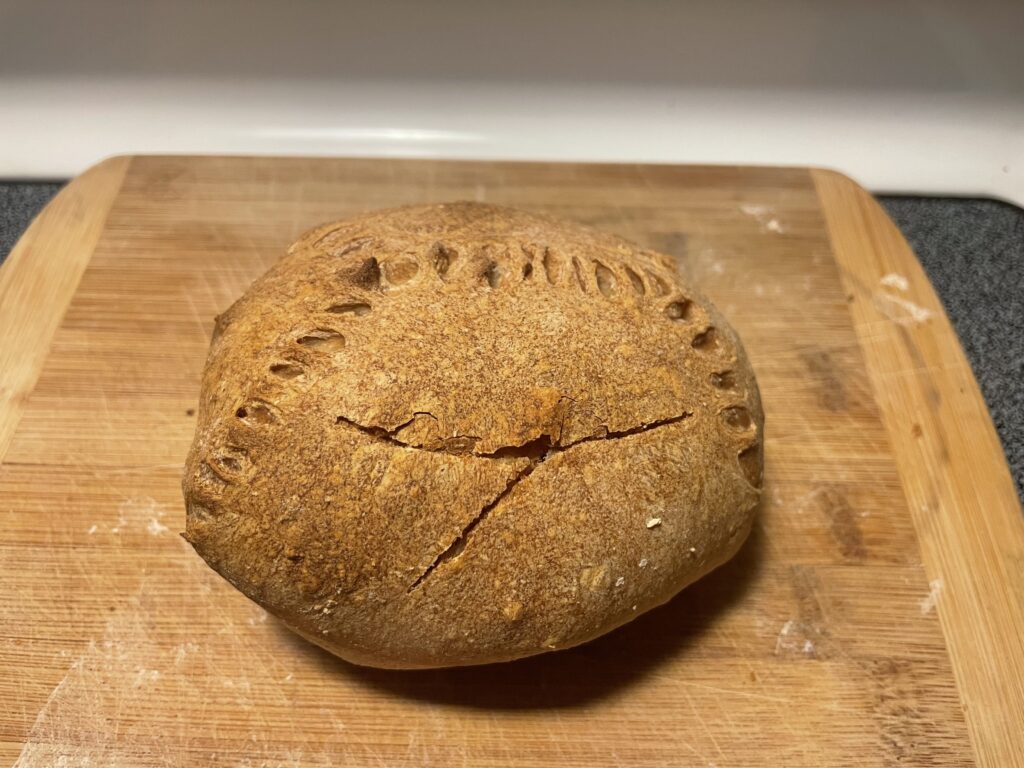
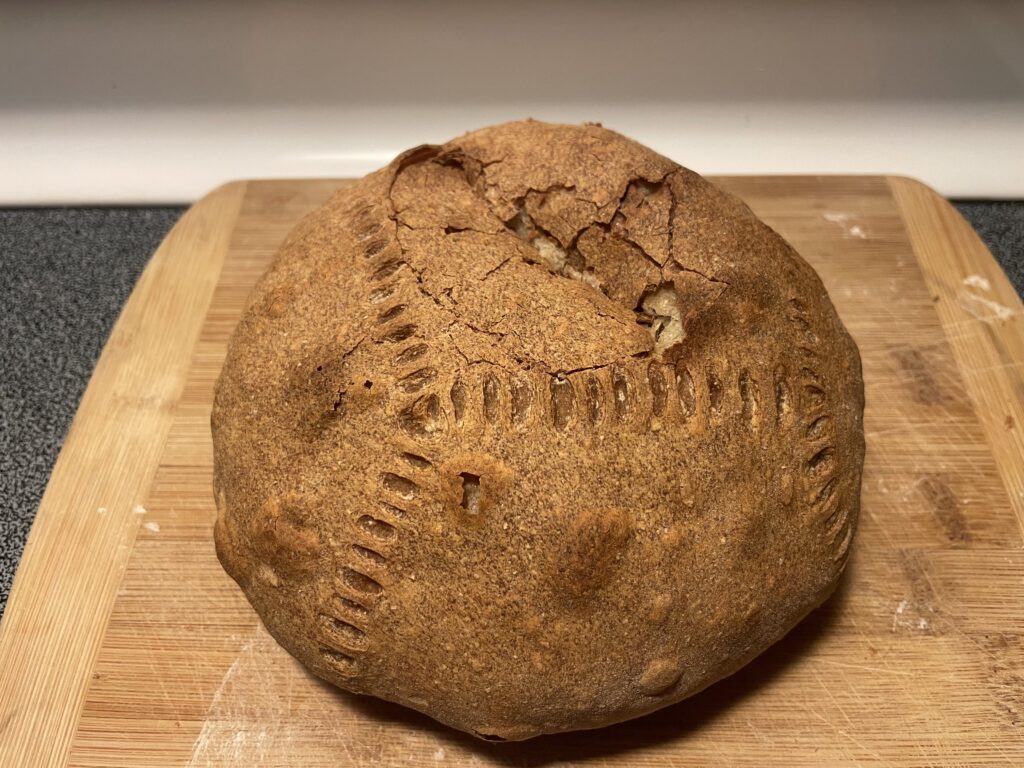
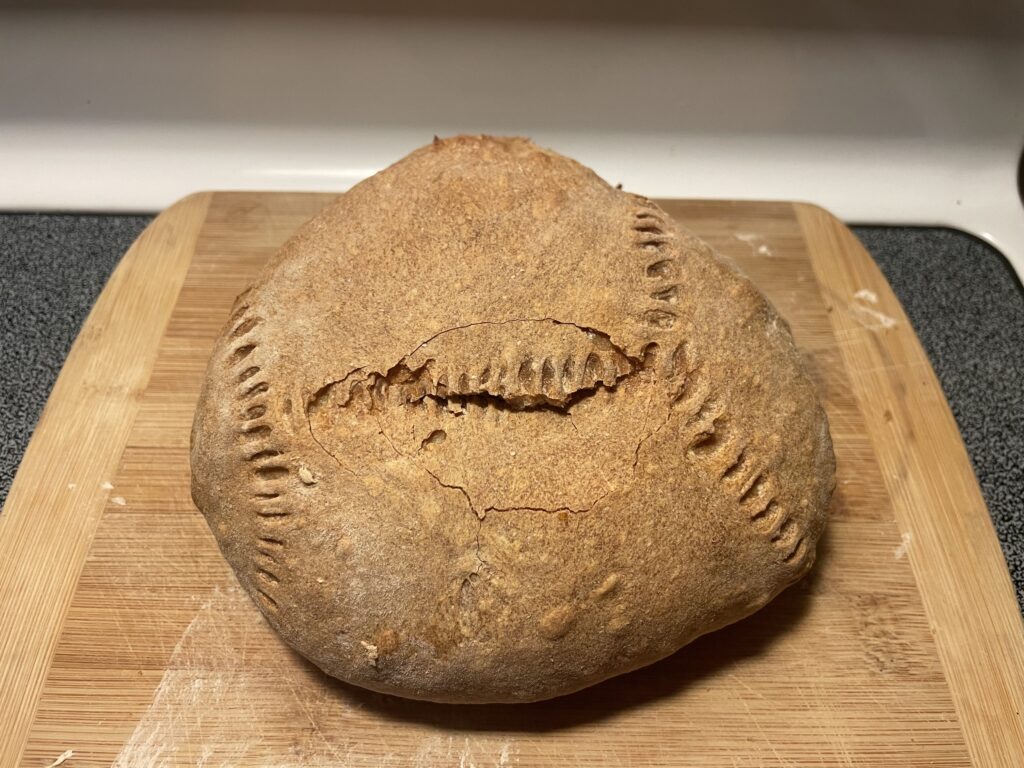
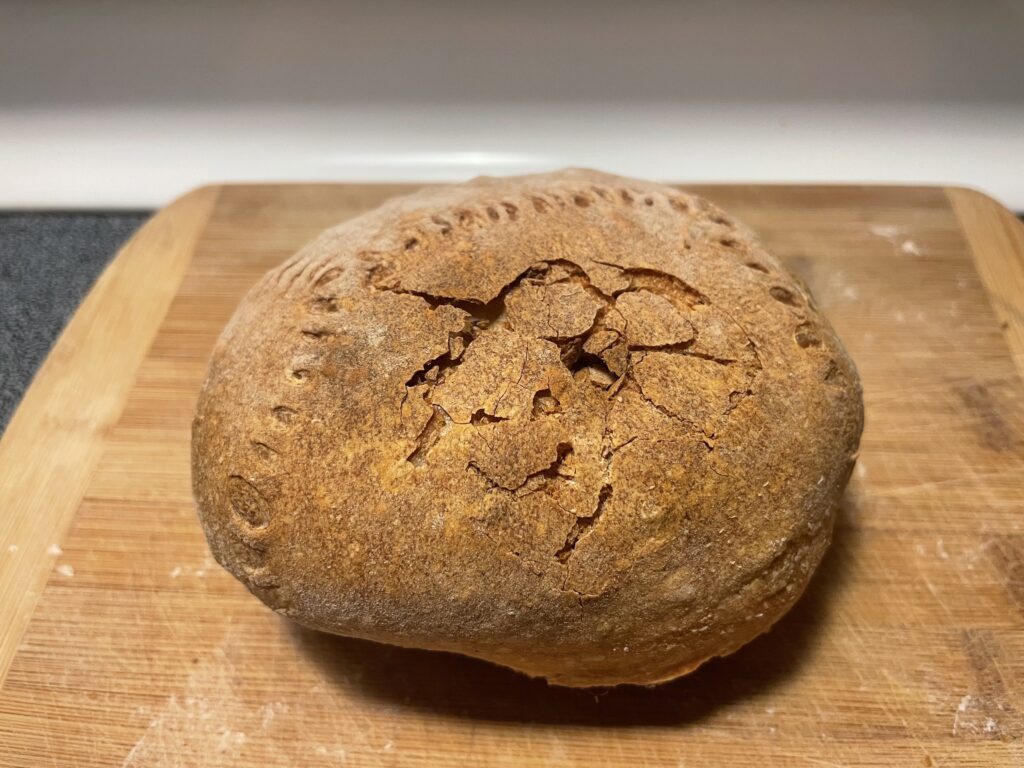
Sources
Betts, J., Desaix, P., Johnson, E., Johnson, J., Korol, O., Kruse, D., Womble, M., & Young, K. (2022). 6.5 Fractures: Bone Repair. In Anatomy and Physiology (2nd ed., pp. 212–214). OpenStax.
Hopkins Medicine, (2021). Head Injury. Johns Hopkins Medicine. https://www.hopkinsmedicine.org/health/conditions-and-diseases/head-injury
Tamuli, R. P. (2014). Types of skull fracture. NMO Journal (ISSN (Print)-2348-3806), 8(2).
Yoganandan, N., & Pintar, F. A. (2004). Biomechanics of temporo-parietal skull fracture. Clinical Biomechanics, 19(3), 225-239.
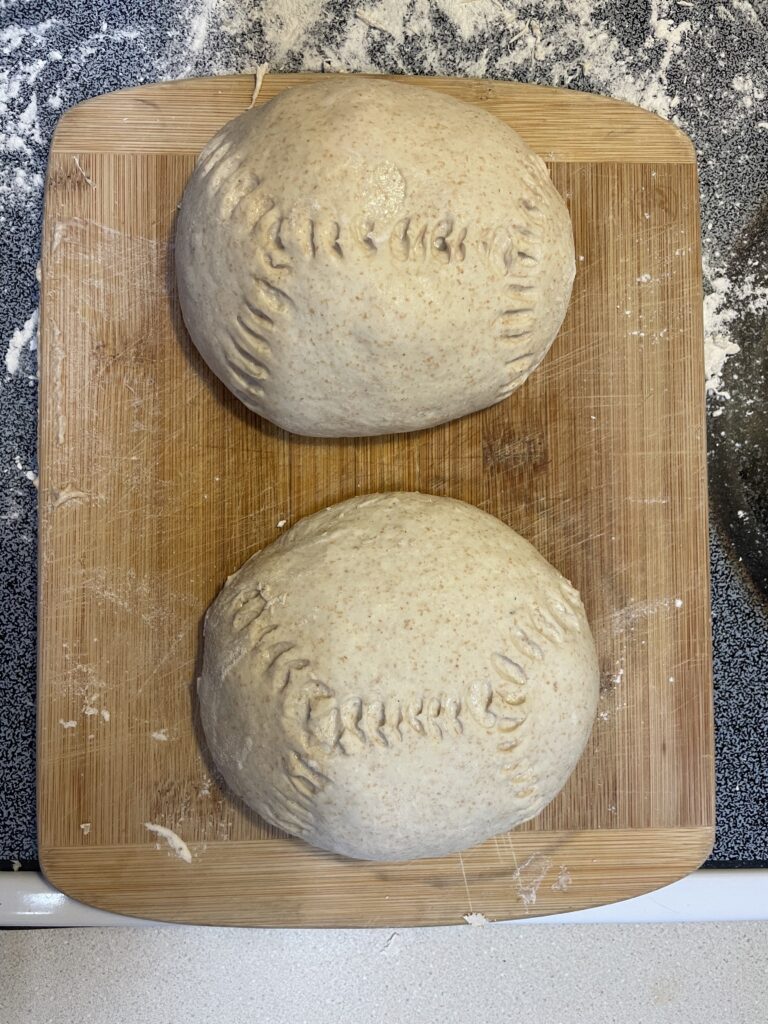


Skull fractures are serious injuries caused by trauma to the head, potentially leading to damage to sensory organs, impaired functions like eating and breathing, or life-threatening conditions such as brain bleeds or swelling. The cranial bones protect the brain within the cranial vault, consisting of a dense outer layer, a soft spongy interior, and a rigid inner layer. Fractures may affect only the outer layer or penetrate deeper, increasing the risk of severe injury.
The unique structure of cranial bones, with flat surfaces and complex features, differentiates skull fracture classifications from those of other bones. There are six primary types of cranial fractures: linear, depressed, comminuted, diastatic, ring, and basilar. Linear fractures are simple cracks without bone displacement, while depressed fractures involve bone fragments sinking inward. Comminuted fractures break the bone into multiple pieces, which may or may not depress. Diastatic fractures occur along cranial sutures, often seen in young children due to their softer, more flexible skulls. Ring fractures circle the foramen magnum, typically from high-impact falls, and basilar fractures occur at the skull base, often with visible bruising near the eyes or ears.
To demonstrate the unique classification of skull fractures, Soren has modeled four of the main six fracture patterns in loaves of baked bread. He scored the bread to reflect the suture joints of the skull, created an extra crispy crust, and used different utensils and varied pressure to demonstrate the fracture patterns.